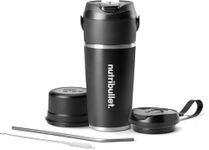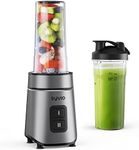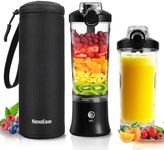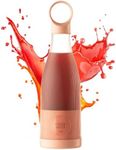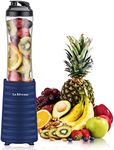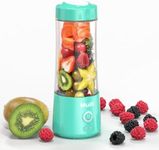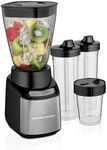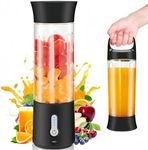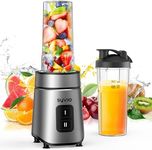Buying Guide for the Best Portable Blenders
Choosing a portable blender can make your daily routine much easier, whether you want to make smoothies on the go, blend protein shakes at the gym, or prepare baby food while traveling. The key is to find a model that matches your lifestyle and intended use. To do this, you should understand the main features that affect performance, convenience, and durability. By focusing on the most important specifications, you can confidently select a portable blender that fits your needs.Battery Life and ChargingBattery life refers to how long the blender can operate before needing a recharge. This is important because it determines how many times you can use the blender when you're away from a power source. Some blenders can only handle a few blends per charge, while others can last for a dozen or more. If you plan to use your blender throughout the day or while traveling, look for longer battery life. Also, consider the charging method—USB charging is convenient for travel, while some models may require a wall outlet.
Blending Power (Motor Strength)Blending power is usually measured in watts or by the number of revolutions per minute (RPM) the motor can achieve. This determines how well the blender can handle tough ingredients like ice, frozen fruit, or nuts. Lower-powered blenders are suitable for soft fruits and liquids, while higher-powered ones can crush ice and blend thicker mixtures. If you want to make smoothies with hard or frozen ingredients, choose a blender with higher power. For simple shakes or baby food, a lower-powered model may be sufficient.
CapacityCapacity is the amount of liquid or ingredients the blender jar can hold, usually measured in ounces or milliliters. Smaller capacities (around 10-12 oz) are great for single servings and portability, while larger ones (16-20 oz or more) are better if you want to make bigger drinks or share with others. Think about how much you typically want to blend at once and whether you need a compact size for easy carrying.
Blade Quality and MaterialThe quality and material of the blades affect how efficiently the blender can cut through ingredients and how long it will last. Stainless steel blades are common and offer good durability and sharpness. Some blenders have multi-angle or reinforced blades for better blending. If you plan to blend tougher items, look for strong, high-quality blades. For basic use, standard stainless steel blades are usually enough.
Ease of CleaningEase of cleaning is about how simple it is to wash the blender after use. Some portable blenders have detachable parts or self-cleaning functions, making them easier to maintain. If you want to use your blender frequently or on the go, look for models that are easy to rinse or have dishwasher-safe components. This will save you time and encourage regular use.
Portability and WeightPortability refers to how easy it is to carry the blender with you. Lightweight and compact designs are best for travel, work, or gym use. Some blenders come with travel lids or handles for added convenience. If you plan to carry your blender in a bag or backpack, choose a model that is light and has a secure, leak-proof design.
Safety FeaturesSafety features can include things like automatic shut-off, secure locking mechanisms, and non-slip bases. These are important to prevent accidents, especially if you’re using the blender in different environments. If you have children or plan to use the blender in busy settings, look for models with good safety features to ensure peace of mind.



